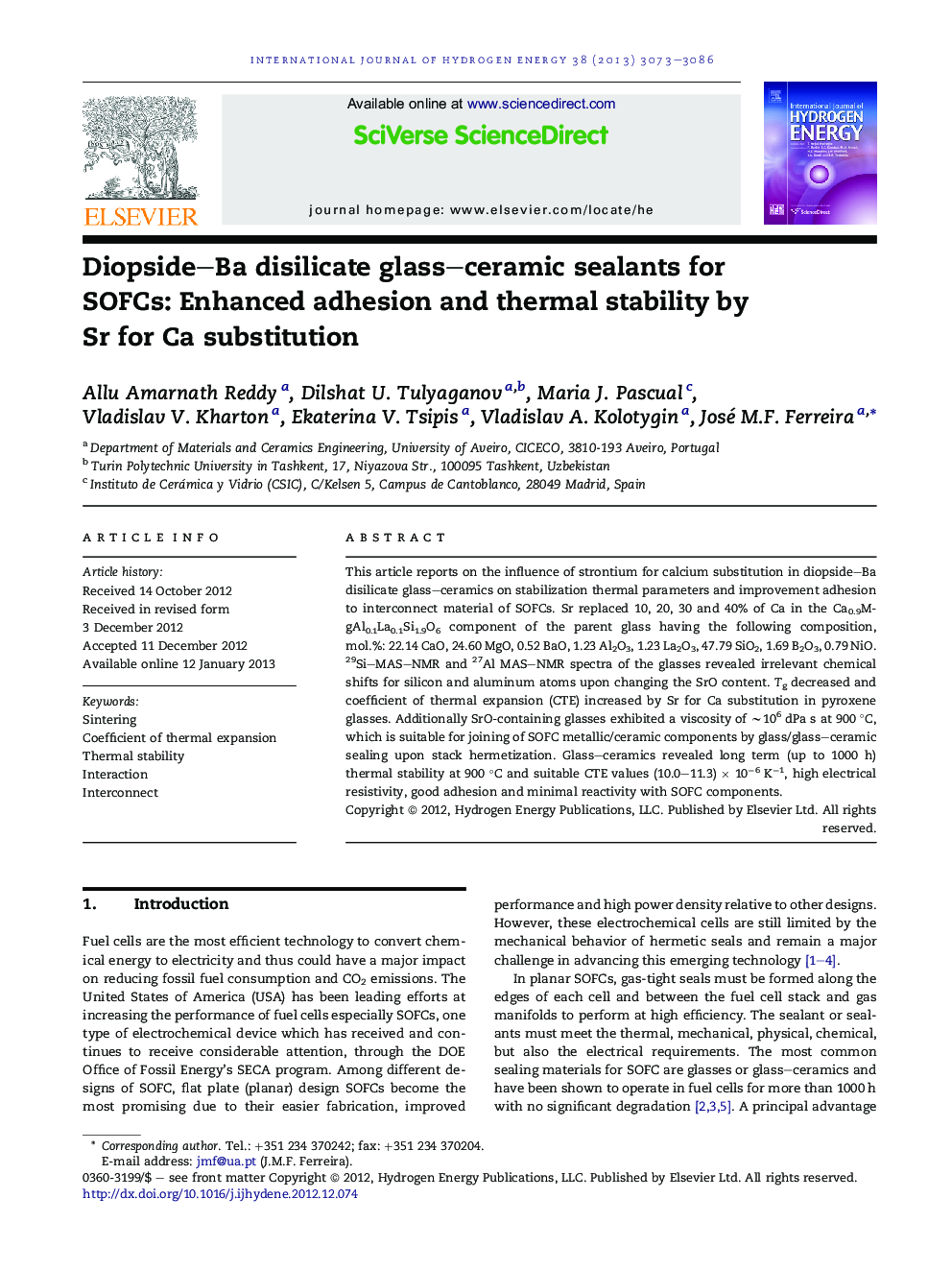| Article ID | Journal | Published Year | Pages | File Type |
|---|---|---|---|---|
| 1281974 | International Journal of Hydrogen Energy | 2013 | 14 Pages |
This article reports on the influence of strontium for calcium substitution in diopside–Ba disilicate glass–ceramics on stabilization thermal parameters and improvement adhesion to interconnect material of SOFCs. Sr replaced 10, 20, 30 and 40% of Ca in the Ca0.9MgAl0.1La0.1Si1.9O6 component of the parent glass having the following composition, mol.%: 22.14 CaO, 24.60 MgO, 0.52 BaO, 1.23 Al2O3, 1.23 La2O3, 47.79 SiO2, 1.69 B2O3, 0.79 NiO. 29Si–MAS–NMR and 27Al MAS–NMR spectra of the glasses revealed irrelevant chemical shifts for silicon and aluminum atoms upon changing the SrO content. Tg decreased and coefficient of thermal expansion (CTE) increased by Sr for Ca substitution in pyroxene glasses. Additionally SrO-containing glasses exhibited a viscosity of ∼106 dPa s at 900 °C, which is suitable for joining of SOFC metallic/ceramic components by glass/glass–ceramic sealing upon stack hermetization. Glass–ceramics revealed long term (up to 1000 h) thermal stability at 900 °C and suitable CTE values (10.0–11.3) × 10−6 K−1, high electrical resistivity, good adhesion and minimal reactivity with SOFC components.
► Diopside–Ba disilicate glass–ceramics were evaluated for SOFC sealant application. ► Diopside crystalline phase was developed during long heat treatment conditions. ► Investigated glass–ceramics are showing stable CTE values. ► The glasses were found to be chemical compatible with Sanergy HT metallic interconnect.
